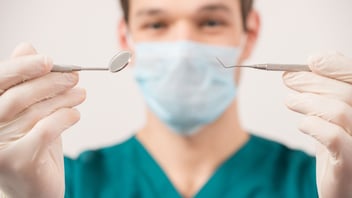Dental Practice Accounting 101: Don't Ignore the Balance Sheet

How do you know you are making sound financial decisions about your dental practice? How can you show potential buyers that you have sufficient assets? How do you show a bank that you can make loan payments? The answer to all of these questions is your dental practice balance sheet.
Just like daily brushing and flossing is essential to dental hygiene, keeping an accurate balance sheet is an essential part of dental practice accounting. So, what exactly is a balance sheet?
According to Harvard Business School, a balance sheet is a financial statement, “designed to communicate exactly how much a company or organization is worth — its so-called “book value.” The balance sheet achieves this by listing out and tallying up all of a company’s assets, liabilities, and owner’s equity as of a particular date, also known as the “reporting date."
 Why Are Balance Sheets so Important?
Why Are Balance Sheets so Important?
A balance sheet is essential to dental bookkeeping because it enables you to maintain accurate financial records. Bookkeeping ensures you record all necessary financial transactions and pay taxes on time and can help your practice identify how to reduce expenses and maximize profits.
A balance sheet is crucial because it proves your practice’s book value.
It can also help guide your business decisions and find areas to improve. High liabilities or low assets could predict a pending cash shortage. The balance sheet is also relevant for other parties. For example, a lender or bank will scrutinize it to determine whether you can cover payments. Your practice balance sheet will show an interested buyer its ability to meet its long- and short-term obligations.
Related: Dental Accounting: A Practical Guide For Dentists
 What exactly does a balance sheet show?
What exactly does a balance sheet show?
The easiest way to understand a balance sheet is by comparing it to a home purchase. For example, imagine you are buying a $200,000 house. That’s your asset. In a typical scenario, you’ll have $40,000 in cash for a 20% down payment. That down payment is your owner’s equity. Then you’ll have to ask a bank to finance the remaining $160,000. That loan is debt, also called liability. The assets should be equal to the debt plus owners’ equity.
A balance sheet shows a business owner the balance of all their accounts at any time.
Cash flow fluctuates, so balance sheets change. Most of the time, you should check it about once a month.
 What is on a balance sheet?
What is on a balance sheet?
As mentioned above, a balance sheet has two sections. The assets are on the top and the liabilities and equity are on the bottom.
Ideally, your asset value is higher than your liabilities.
Assets include:
- Cash
- Anything that can be converted into cash within one year, such as bank accounts, investments, accounts receivable, and supplies.
- Long-term assets that can’t be converted into cash in one year. Those include dental equipment, furniture, office space, patients, and even intangibles, like goodwill.
Liabilities include:
- Current liabilities due within one year, such as credit card balances, other debt, or taxes you owe including any portion of long-term liabilities due in the next 12 months.
- Long-term liabilities you won’t pay within a year, such as a mortgage or a practice acquisition loan.
Equity includes anything you or the previous dental practice owner invested in the practice such as:
- Personal contributions
- Retained earnings
- Current year’s net income
Related: The KPIs That Determine Your Dental Practice's Success
 Other essential types of dental accounting financial reports
Other essential types of dental accounting financial reports
In addition to balance sheets, your dental accounting should include a cash flow statement and a profit and loss statement.
Your cash flow statement ensures you have enough cash to enable your dental practice to function smoothly. A thorough cash flow statement shows precisely where your money goes and how much you can expect to generate daily and monthly. A cash flow statement should include cash inflows, such as patient payments, and cash outflows, such as rent and supply fees.
The profit and loss statement shows how profitable your dental practice is. It includes your expenses and the revenue your business is generating.
In the landscape of dental healthcare, a reliable balance sheet is an indispensable tool for dentists to ensure the long-term success and sustainability of their practice. Similar to routine dental appointments, think of this document as your dental practice’s financial health check-up. It not only aids in monitoring cash flow, managing debt, and making informed investment decisions but also plays a pivotal role in securing loans or attracting potential investors.
Related: Six Strategies For Debt Management In Dental Practices
Expert Dental Accounting With Chaliff + Associates
The CPAs at Chaliff + Associates are experts in dental bookkeeping and accounting. We are committed to helping Memphis area dentists reach their practice goals and protect their business interests. Contact us today to learn why you should trust us with your dental practice accounting needs.





